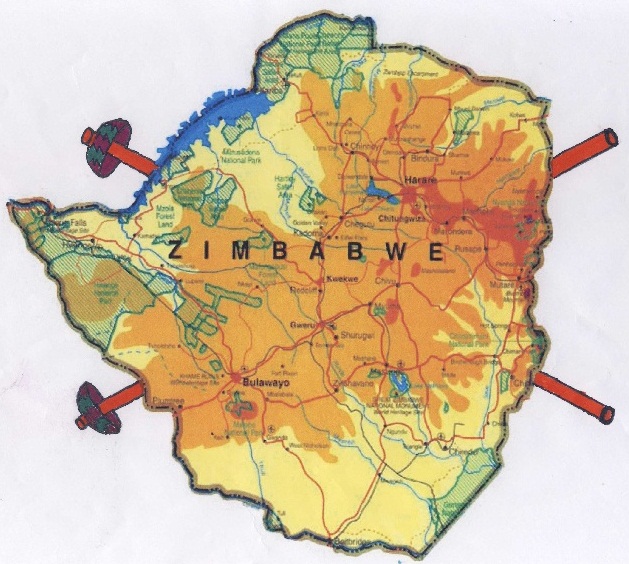Shona-Style Marimba - The Instrument and the Music
Shona refers to the largest group of people who live in Eastern Zimbabwe and Southern Mozambique. The first set of Shona marimbas was designed and built at Kwanangoma College in Zimbabwe. The chief designer of this type of marimba was Alport Mhlanga. They are a combination of two traditional area instruments - drums and Mbira or thumb piano. These instruments have a unique musical scale and a unique sound. The scale consists of the following notes: A,B,C,D,E,F,F#, and G, and as each note resonates, a distinctive buzz is heard. The buzz mimics that of the Mbira. On the Mbira the buzz sound is accomplished with bottle caps. On the marimba the buzz is created by placing cellophane plastic wrap over holes bored into the sides or the bottom of marimba's resonator pipes.
Traditional Shona marimbas and the music was brought to the United States in the late 60's by a man named Dumisani Maraire. He started the first marimba band at the University of Washington. This band was made up of students from the university and Shona musicians who were living in the area at that time. This group performed extensively throughout the West Coast. The upbeat sound of the music caught on and its popularity grew. Soon, new adult and youth marimba bands began to pop up in that region and in the Midwest. The marimba's journey was not over. In 1993, with the help of Alport Mhlanga, the instrument and the music traveled East to Williams College in Williamstown, Massachusetts. Alport built a set of marimbas for Williams College, and under the leadership of the late Dr. Ernest Brown, the Zambezi Marimba Group was born.
The groups that formed in the United States played traditional marimba music, but also found it necessary to compose new marimba music. This music combines the traditional Shona flare with ideas influenced by our own American culture.
Traditional Shona marimbas and the music was brought to the United States in the late 60's by a man named Dumisani Maraire. He started the first marimba band at the University of Washington. This band was made up of students from the university and Shona musicians who were living in the area at that time. This group performed extensively throughout the West Coast. The upbeat sound of the music caught on and its popularity grew. Soon, new adult and youth marimba bands began to pop up in that region and in the Midwest. The marimba's journey was not over. In 1993, with the help of Alport Mhlanga, the instrument and the music traveled East to Williams College in Williamstown, Massachusetts. Alport built a set of marimbas for Williams College, and under the leadership of the late Dr. Ernest Brown, the Zambezi Marimba Group was born.
The groups that formed in the United States played traditional marimba music, but also found it necessary to compose new marimba music. This music combines the traditional Shona flare with ideas influenced by our own American culture.


